Introduction to The Jungle
In this chapter I will go through the most basic jungle knowledge, namely the different jungle monsters, plants and the map itself. Experienced players may want to skip this chapter, but if you're new to the jungle role itself than this might be useful.
 |
|
GrompThe first Jungle camp consists of one monster, called the  gromp. It has high AS, but it decays over 5s. Because of the high AS, you want to kite it so gromp. It has high AS, but it decays over 5s. Because of the high AS, you want to kite it so  gromp can only attack you once before having to move again. This means you'll be able to trade one AA for one AA. It's one of the camps that grants a higher amount of gold and exp. Additionally, after killing it you will regain a bit of mana and HP. gromp can only attack you once before having to move again. This means you'll be able to trade one AA for one AA. It's one of the camps that grants a higher amount of gold and exp. Additionally, after killing it you will regain a bit of mana and HP. |
 |
|
Murk WolvesThe next camp is the  murk wolf camp. It contains one bigger wolf and two smaller wolves. You'll want to focus the bigger wolf, as AoE damage from murk wolf camp. It contains one bigger wolf and two smaller wolves. You'll want to focus the bigger wolf, as AoE damage from  Moonsilver Blade, Moonsilver Blade,  Crescent Strike and Crescent Strike and  Pale Cascade will take care of the smaller ones at the same time. Pale Cascade will take care of the smaller ones at the same time. |
 |
|
Crimson RaptorsSimilar to the  murk wolf camp. The murk wolf camp. The  crimson raptor camp contains a bigger monster and a few smaller ones. Auto attack one before you use crimson raptor camp contains a bigger monster and a few smaller ones. Auto attack one before you use  Crescent Strike, as it will be easier to hit all of them at once. With all your AoE damage you melt this camp. Crescent Strike, as it will be easier to hit all of them at once. With all your AoE damage you melt this camp. |
 |
|
Ancient KrugsThe  ancient krug camp is definitely a special camp. At first sight it only contains two monsters: a big and a smaller one. However, once you kill them, they split into 2 smaller monsters. The big monster can split twice, the smaller one only once. It is one of camps that provides the highest exp and gold of the non-epic monsters. ancient krug camp is definitely a special camp. At first sight it only contains two monsters: a big and a smaller one. However, once you kill them, they split into 2 smaller monsters. The big monster can split twice, the smaller one only once. It is one of camps that provides the highest exp and gold of the non-epic monsters. |
 |
|
Rift Scuttler/Scuttle CrabThe last of the medium monsters, the  rift scuttler is a passive monster that roams both sides of the river when it first spawns. After the initial two rift scuttler is a passive monster that roams both sides of the river when it first spawns. After the initial two  rift scuttlers have been killed, only one at a time will respawn at a random side. The rift scuttlers have been killed, only one at a time will respawn at a random side. The  rift scuttler has a shield that can be removed instantly by using hard CC, which rift scuttler has a shield that can be removed instantly by using hard CC, which  Diana lacks sadly. You can cast Diana lacks sadly. You can cast  Smite on it to instantly remove the shield though, but this will leave it vulnerable to getting stolen by the enemy jungler if they are near. Killing this monster creates a zone in the river that grants vision and MS. Smite on it to instantly remove the shield though, but this will leave it vulnerable to getting stolen by the enemy jungler if they are near. Killing this monster creates a zone in the river that grants vision and MS. |
 |
|
Blue SentinelThe  blue sentinel is one of the most important non-epic monsters. The killer of this golem gets the blue sentinel is one of the most important non-epic monsters. The killer of this golem gets the  crest of insight. This buff, better known as "blue buff", grants extra mana/energy regen and AH. The monster itself isn't hard to kill, but it is quite tanky. The mana regen and AH from crest of insight. This buff, better known as "blue buff", grants extra mana/energy regen and AH. The monster itself isn't hard to kill, but it is quite tanky. The mana regen and AH from  crest of insight is really valuable, even though crest of insight is really valuable, even though  Diana does not necessarily need much mana. If your midlaner is a mage (and doing well), then you might want to give the Blue buff later on in the game. It helps them a lot with waveclear. Diana does not necessarily need much mana. If your midlaner is a mage (and doing well), then you might want to give the Blue buff later on in the game. It helps them a lot with waveclear. |
 |
|
Red BramblebackJust like the  blue sentinel, the blue sentinel, the  red brambleback grants a buff to the one who kills it. red brambleback grants a buff to the one who kills it.  crest of cinders is usually referred to as "red buff" and makes your auto attacks slow champions while also dealing some extra damage over time. Additionally, you'll have some extra HP regen. Later on, you should give it to the ADC as they benefit the most from the on-hit slow and burn damage from crest of cinders is usually referred to as "red buff" and makes your auto attacks slow champions while also dealing some extra damage over time. Additionally, you'll have some extra HP regen. Later on, you should give it to the ADC as they benefit the most from the on-hit slow and burn damage from  crest of cinders. Early it's a really strong buff and can decide a 1v1 between junglers. It's also really good for ganking because of the slow. crest of cinders. Early it's a really strong buff and can decide a 1v1 between junglers. It's also really good for ganking because of the slow. |
One of the most valuable jungle monsters is the  dragon. Situated at the lower side of the map, they can appear in 4 different elemental forms, each giving an unique buff to your whole team. The first 2 dragon. Situated at the lower side of the map, they can appear in 4 different elemental forms, each giving an unique buff to your whole team. The first 2  dragon types that spawn are random and are always of a different type, but after the second dragon types that spawn are random and are always of a different type, but after the second  dragon is defeated, only dragon is defeated, only  dragons of a third type that hasn't appeared yet spawns. Additionally, the map transforms into an elemental rift, matching the third and following dragons of a third type that hasn't appeared yet spawns. Additionally, the map transforms into an elemental rift, matching the third and following  dragons. After either team has defeated 4 dragons. After either team has defeated 4  dragons, they'll gain a powerful dragon soul. From that point on, only the dragons, they'll gain a powerful dragon soul. From that point on, only the  elder dragon will spawn. elder dragon will spawn.
 |
|
Cloud DrakeThe first elemental dragon type is the  cloud drake. It is fast and has high DPS against single targets. Upon killing it, your team gains extra AH on their ultimate ability, which is great on cloud drake. It is fast and has high DPS against single targets. Upon killing it, your team gains extra AH on their ultimate ability, which is great on  Diana and other champions with powerful ultimates such as Diana and other champions with powerful ultimates such as  Malphite, Malphite,  Ornn, Ornn,  Brand..., but not so good on shapeshifter champions like Brand..., but not so good on shapeshifter champions like  Elise and Elise and  Jayce. Jayce.
The cloud rift contains air currents on the map that speed up nearby champions. Useful if you have to escape or dodge skillshots.
The Cloud Dragon Soul grants permanent extra MS and after casting your ultimate, you'll gain an extra burst of MS. |
 |
 |
|
Infernal DrakeThe  infernal drake is considered the most valuable elemental infernal drake is considered the most valuable elemental  dragon by many players. Combat wise, it's probably the most all round dragon by many players. Combat wise, it's probably the most all round  dragon type. Note that it deals AoE damage. As bonus effect upon killing it, it increases your AD and AP with a percentage. Early game, it isn't really noticeable, but late game it can really make a difference. dragon type. Note that it deals AoE damage. As bonus effect upon killing it, it increases your AD and AP with a percentage. Early game, it isn't really noticeable, but late game it can really make a difference.
The Infernal Rift comes with the destruction of several walls and brushes. No big things to note here, although this might be a small buff to champions without gapclosers through walls.
The Infernal Dragon Soul makes your next damaging attack or ability every few seconds explode, dealing some damage to the target and nearby enemies, scaling with AP, AD and bonus HP. A strong combat tool, great for a bursty diver like  Diana. Diana. |
 |
 |
|
Ocean DrakeThe  ocean drake deals slowing single target damage. The slow on its attacks makes it dangerous in some cases; as it will trouble you if you have to escape. The buff it grants restores some of your missing HP both in and out of combat. ocean drake deals slowing single target damage. The slow on its attacks makes it dangerous in some cases; as it will trouble you if you have to escape. The buff it grants restores some of your missing HP both in and out of combat.
The Ocean rift brings life, making brushes larger and possibly spawning the Honeyfruit plant in the jungle.
The Ocean Dragon Soul grants you a regeneration effect affecting both HP and mana after damaging an enemy. |
 |
 |
|
Mountain DrakeThe  mountain drake is the most tanky elemental mountain drake is the most tanky elemental  dragon, making it more time consuming to kill one. Its attacks are AoE and despite its low AS, the attacks hit hard. Its elemental buff gives your team an extra percentage MR and armor, which is always nice to have, especially when your team got some tanks or when you use tankier dragon, making it more time consuming to kill one. Its attacks are AoE and despite its low AS, the attacks hit hard. Its elemental buff gives your team an extra percentage MR and armor, which is always nice to have, especially when your team got some tanks or when you use tankier  Diana builds. Diana builds.
The Mountain Rift creates additional walls. The creation of more choke points can be in both in your advantage and in your disadvantage.  Moonfall becomes even more scary, but so do other abilities like Moonfall becomes even more scary, but so do other abilities like  Unstoppable Force, Unstoppable Force,  Pop Blossom or Pop Blossom or  Solar Flare while there's little space. Solar Flare while there's little space.
The Mountain Dragon Soul gives your team a shield scaling with AP, AD and bonus HP after not taking damage for 5s. It's a huge advantage in teamfights, just like The Infernal Dragon Soul. |
 |
 |
|
Elder DragonLike mentioned before, the  elder dragon only spawns after one team has claimed a Dragon Soul. It is stronger than any elemental elder dragon only spawns after one team has claimed a Dragon Soul. It is stronger than any elemental  dragon, but the reward for killing one is even better. It grants a buff that burns enemies after damaging them, but the biggest part is that it executes enemies below 20% of their HP. That is really strong and can turn a game around if the team that is behind somehow manages to get it. dragon, but the reward for killing one is even better. It grants a buff that burns enemies after damaging them, but the biggest part is that it executes enemies below 20% of their HP. That is really strong and can turn a game around if the team that is behind somehow manages to get it. |
 |
|
Rift HeraldThe  rift herald spawns in the pit at the upper side of the map. It is quite tanky, but it can be defeated easily by prioritizing the eye at its back. Auto attacking the eye will chunk its HP. When killed, the rift herald spawns in the pit at the upper side of the map. It is quite tanky, but it can be defeated easily by prioritizing the eye at its back. Auto attacking the eye will chunk its HP. When killed, the  rift herald drops the rift herald drops the  Eye of the Herald. It can only be taken by the team that killed it and it despawns after 20s if not picked up by then. Eye of the Herald. It can only be taken by the team that killed it and it despawns after 20s if not picked up by then.  Eye of the Herald will replace your trinket for 4 minutes. You can then use it to summon the Eye of the Herald will replace your trinket for 4 minutes. You can then use it to summon the  rift herald, who now fights for your team and pushes the nearest lane. It is a strong sieging tool, but it is still vulnerable at its eye on the back, while being less tanky than at first. rift herald, who now fights for your team and pushes the nearest lane. It is a strong sieging tool, but it is still vulnerable at its eye on the back, while being less tanky than at first.
The  rift herald can respawn once before rift herald can respawn once before  baron nashor takes its place. baron nashor takes its place. |
 |
|
Baron Nashor baron nashor is the strongest and most valuable neutral monster in the game. Due to how tanky it is, you'll need multiple teammates to even stand a chance against it. At least one frontliner and an ADC should help you with taking it. Upon killing this monster, your living team members get the baron nashor is the strongest and most valuable neutral monster in the game. Due to how tanky it is, you'll need multiple teammates to even stand a chance against it. At least one frontliner and an ADC should help you with taking it. Upon killing this monster, your living team members get the  hand of baron buff. This buff grants bonus AD and AP, while also empowering nearby minions. Ideal for when your team is ahead and is able to contest hand of baron buff. This buff grants bonus AD and AP, while also empowering nearby minions. Ideal for when your team is ahead and is able to contest  baron nashor without issues, but you can't really finish the game due to high waveclear on the enemy team. baron nashor without issues, but you can't really finish the game due to high waveclear on the enemy team. |
There are 3 types of plants on the rift. They can all be found in the jungle or in the river. They can be destroyed to grant some (small) bonuses.
 |
|
HoneyfruitThe first type of plant is the Honeyfruit. These plants spawn at the river and can be destroyed to spawn some fruit on the ground. These fruits can be picked up to restore some HP and mana. Note that these fruits also slow you while consuming them, so taking them while escaping can be risky. |
 |
|
Scryer's BloomNext comes Scryer's Bloom. These blue plants can be found at the edge of the jungle, near the river. Destroying them reveals a wide area in a cone. This can be used to reveal wards or to get a look at objectives when your team doesn't have any wards there. |
 |
|
Blast ConeThe last plant is known as a Blast Cone. They appear deeper into the jungle. Destroying them knocks away all nearby units. It can be used to hop over walls, for example from your own jungle into the  dragon or dragon or  baron nashor pit. It can also be used in clutch situations when you have to flee. baron nashor pit. It can also be used in clutch situations when you have to flee. |
Jungle Routes
Currently,  Diana is easily able to clear 5 camps before Scuttle Crab spawns at 3:15, even without a leash from your laners. Every game is different and you will have to adapt to different situations, but that's part of the jungler's job. But usually, you will be able to follow one of the standard jungle routes. Diana is easily able to clear 5 camps before Scuttle Crab spawns at 3:15, even without a leash from your laners. Every game is different and you will have to adapt to different situations, but that's part of the jungler's job. But usually, you will be able to follow one of the standard jungle routes.
The general rule is to path towards the side of the map where you want to contest scuttle and/or try to gank. Usually this means towards the side of the map where you'll most likely have lane priority; where mid and/or botlane or toplane has a pushing minion wave, giving them easy access to the river to help you when needed.
You should also keep the enemy jungler in mind. You might want to avoid them if they are strong early game duelists ( Olaf, Olaf,  Lee Sin, Lee Sin,  Volibear) or when they tend to cheese you with early invades ( Volibear) or when they tend to cheese you with early invades ( Shaco, Shaco,  Udyr, Udyr,  Rengar, Rengar,  Graves). Then it's wise to path towards the opposite direction of them. Of course you cannot always say for certain what their jungle route will look like or where they started, but usually you'll have at least some clues (which I will cover later). For example a blue side Graves). Then it's wise to path towards the opposite direction of them. Of course you cannot always say for certain what their jungle route will look like or where they started, but usually you'll have at least some clues (which I will cover later). For example a blue side  Shaco will most likely start botside at his Shaco will most likely start botside at his  red brambleback to then path towards topside. So what you'll do is start topside at your own red and path towards botside. red brambleback to then path towards topside. So what you'll do is start topside at your own red and path towards botside.  Shaco won't be able to invade you while you get at least one Scuttle Crab for free. Shaco won't be able to invade you while you get at least one Scuttle Crab for free.
The opposite logic can also be applied. If you happen to be matched against a jungler with poor early game ( Amumu, Amumu,  Lillia, Lillia,  Master Yi), you should use the Scuttle Crabs as an opportunity to fight the enemy jungler (as long as you got lane priority to allow aggressive plays). Master Yi), you should use the Scuttle Crabs as an opportunity to fight the enemy jungler (as long as you got lane priority to allow aggressive plays).
When you really are uncertain on where to start, just start botside. You'll get a leash from 2 people instead of 1, so your clear should be faster and healthier.
Blue Side
Towards Topside:  red brambleback -> red brambleback ->  ancient krug -> ancient krug ->  crimson raptor -> crimson raptor ->  murk wolves -> murk wolves ->  blue sentinel -> blue sentinel ->  rift scuttler rift scuttler
Towards Botside:  blue sentinel -> blue sentinel ->  gromp -> gromp ->  murk wolves -> murk wolves ->  crimson raptor -> crimson raptor ->  red brambleback -> red brambleback ->  rift scuttler rift scuttler
Red Side
Towards Topside:  blue sentinel -> blue sentinel ->  gromp -> gromp ->  murk wolves -> murk wolves ->  crimson raptor -> crimson raptor ->  red brambleback -> red brambleback ->  rift scuttler rift scuttler
Towards Botside:  red brambleback -> red brambleback ->  ancient krug -> ancient krug ->  crimson raptor -> crimson raptor ->  murk wolves -> murk wolves ->  blue sentinel -> blue sentinel ->  rift scuttler rift scuttler
With these clears, you'll be level 3 after clearing your third camp and level 4 after getting a Scuttle Crab and thus completing the first clear. Then you have a few options to do next: you can look for a gank midlane or the adjacent sidelane. You can also invade the enemy jungle as well, if there are no good opportunities available you can simply go clear your last jungle camp and base.
Ganking
What is a Gank?
For those who are new to the game or to MOBAs in general, a gank is when one or more people enter a lane to create a number advantage. Usually this is the jungler, who will come to lanes to create 2v1 or 3v2 situations, which often results in kills or other advantages. Taking turret plates or even the whole turret can mean the gank was successful too. Getting the enemies to waste their  Flash is an advantage as well. In general, a gank is successful whenever your team gains a gold advantage or when the enemy team wastes more resources (summoner spells, ultimate abilities, access to gold/experience). Flash is an advantage as well. In general, a gank is successful whenever your team gains a gold advantage or when the enemy team wastes more resources (summoner spells, ultimate abilities, access to gold/experience).
Target Selection
In theory you can simply walk into any lane and gank them. In fact, you should definitely pay some thoughts on who you'll be ganking. First of all, you should be identifying both teams and look at a few things:
|
|
1. Which enemies are easy targets? (Which are immobile, have a weak early game such as  Kassadin, Kassadin,  Senna, Senna,  Kayle.) Kayle.)
2. Which teammates can set easy ganks up? ( Diana already offers lots of damage, so ideally you'll have laners that can set up ganks with their CC.) Diana already offers lots of damage, so ideally you'll have laners that can set up ganks with their CC.)
3. Which teammates would benefit the most from getting a lead? (Ganking botlane and getting a  Jinx ADC ahead will ensure a strong hypercarry for the mid-lategame, while helping a toplane tank like Jinx ADC ahead will ensure a strong hypercarry for the mid-lategame, while helping a toplane tank like  Maokai won't win you games.) Maokai won't win you games.)
4. Which enemy champions can be made completely irrelevant when set behind? (Early game champions that rely on snowballing an early lead can be shut down really hard if you put them behind early. In general such champions,  Draven and most assassin for example, don't have great scaling, so camping them early will basically remove them from the game.) Draven and most assassin for example, don't have great scaling, so camping them early will basically remove them from the game.)
5. Which enemies have summoner spells/key abilities on cooldown? ( Flash is the most obvious one. Some ultimates are also super important for a champions safety, such as Flash is the most obvious one. Some ultimates are also super important for a champions safety, such as  Undying Rage, Undying Rage,  Chronoshift or Chronoshift or  Final Hour. When these spells are on cooldown, they can be punished quite easily.) Final Hour. When these spells are on cooldown, they can be punished quite easily.)
6. How well are they doing? (In lower elos it's a common mistake to focus enemies that are fed. In fact, ganking fed enemies is outright dangerous. For example if you gank the enemy toplaner that is 3 levels and 60 cs up above the ally toplaner, than there's a high chance he will be able to 1v2 you and make things worse. Of course you can possibly turn the tide if the enemy is 1 or 2 kills up, but don't gank lanes that are losing super hard. Focus on lanes you can snowball off.) |
Keeping this information in mind, you should set your priorities. This doesn't mean that you can't gank 'harder' lanes though, if there's a good opportunity then go for it. The general rule is to go for low risk, high reward ganks.
How to Gank?
When approaching a lane, ready to gank, you should a few more things in mind.
|
|
1. What is state of the minion wave? Minions should never be underestimated. Both damage and value wise. Especially early game, minions can deal a hefty amount of damage if you're not careful. So if your laner is being pushed under your turret with almost 2 full minion waves, a gank would be a lot riskier than if the minion waves were more or less equal. At the same time, if your laner comes to assist you while a wave is dying to turret, the gold/experience benefit you'd get would be very poor or even worse than the resources he would have gotten from the wave.
2. Are there any wards? Most of the potential pressure you create disappears when the enemy happens to have vision of you. Something that can be easily avoided. If you pay enough attention to the map and to your lanes specifically, you can easily see enemies moving towards bushes and often disappear into the fog of war for a moment before returning. The odds are high they have just warded the river, protecting themselves from you. If you know there is a ward, or when you try to gank but the enemy backs off immediately, use  Oracle Lens or a Oracle Lens or a  Control Ward and clear the enemy ward. Sometimes it's a good idea to stay for a while, as the enemy might try to place a ward immediately after, allowing you to catch them out of position. Control Ward and clear the enemy ward. Sometimes it's a good idea to stay for a while, as the enemy might try to place a ward immediately after, allowing you to catch them out of position.
Note that when enemies are heavily overextending, seeing you coming probably won't even save them.
3. Are they overextending?
To keep it simple, you could divide a lane into roughly 3 parts. (Image portrays Blue side POV.) If the enemy is in the green zone, closer to your team's side, then they are overextending. You have easy access to them and a gank has a high chance to be succesful. If they are in the yellow zone, they are more or less in the middle of the lane. The odds of a successful gank can vary greatly, often depending on other factors such as you laner having CC to setup, or the enemy having mobility to escape. Finally, an enemy in the red zone would be really difficult to punish. They are close to the safety of their own turret, so trying to gank them is just wasting time in most cases.
4. Do they have mobility/CC? Finally, some champions are just innately harder to gank than others. A constantly blinking  Katarina, a speedy Katarina, a speedy  Singed or a dashing Singed or a dashing  Kalista/ Kalista/ Yasuo are way harder to catch than an immobile champion such as Yasuo are way harder to catch than an immobile champion such as  Aphelios, Aphelios,  Vel'Koz or Vel'Koz or  Dr. Mundo. At the same time, champions that can peel with CC can be hard to gank as well. Dr. Mundo. At the same time, champions that can peel with CC can be hard to gank as well.  Poppy's Poppy's  Steadfast Presence and Steadfast Presence and  Keeper's Verdict, Keeper's Verdict,  Neeko's Neeko's  Tangle-Barbs and Tangle-Barbs and  Pop Blossom or Pop Blossom or  Braum's Braum's  Winter's Bite and Winter's Bite and  Glacial Fissure can all make it almost impossible to close the gap. Keep this in mind and pay attention to cooldowns. Glacial Fissure can all make it almost impossible to close the gap. Keep this in mind and pay attention to cooldowns.
5. Where is the enemy jungler?/Are there Global abilities in the game? You should always be aware of the possible arrival of the enemy jungler. Are you certain they are on the other side of the map? If they are close, then you have to be certain you can make the play work fast enough before they get the time to countergank. This or you and your team need to have the stronger 2v2/3v3. Some junglers excel in counterganking. Don't let them bait you, especially because  Lunar Rush is almost exclusively usable as an offensive dash. Lunar Rush is almost exclusively usable as an offensive dash.
Same thing for global ultimates from any champion. It's an extra factor that you will have to account for every once in a while. Don't overcommit when the enemy team got protective global spells like  Soraka's Soraka's  Wish, Wish,  Senna's Senna's  Dawning Shadow or Dawning Shadow or  Shen's Shen's  Stand United. If they got Stand United. If they got  Teleport or other global mobility like Teleport or other global mobility like  Pantheon's Pantheon's  Grand Starfall, Grand Starfall,  Twisted Fate's destiny or Twisted Fate's destiny or  Nocturne's Nocturne's  Paranoia, then you should be careful of those too. Champions with such roaming abilities are usually laners, so you should be watching them even more carefully. If those enemies push their lanes as fast as possible, they are almost guaranteed to roam. If they go missing they are certainly up to no good. Paranoia, then you should be careful of those too. Champions with such roaming abilities are usually laners, so you should be watching them even more carefully. If those enemies push their lanes as fast as possible, they are almost guaranteed to roam. If they go missing they are certainly up to no good.
As  Diana, you got great (conditional) mobility to close the gap. Even though the temptation might be huge to just jump on the enemy, it's usually wiser to hold onto your Diana, you got great (conditional) mobility to close the gap. Even though the temptation might be huge to just jump on the enemy, it's usually wiser to hold onto your  Lunar Rush for as long as possible. Lunar Rush for as long as possible.  Crescent Strike's mark lasts for 3s, so you can go ahead and try to land it when the enemy is close, but don't immediately cast Crescent Strike's mark lasts for 3s, so you can go ahead and try to land it when the enemy is close, but don't immediately cast  Lunar Rush. If the enemy uses mobility/ Lunar Rush. If the enemy uses mobility/ Flash in the following 2-3s, then you got the gapcloser and a free reset while the enemy wasted their cooldowns. The same applies to Flash in the following 2-3s, then you got the gapcloser and a free reset while the enemy wasted their cooldowns. The same applies to  Moonfall. Since it's a pull, it can be used to catch someone. If you can (the enemy isn't killing your laner in the meantime), hold onto it for as long as possible. If the enemy jungler happens to countergank, Moonfall. Since it's a pull, it can be used to catch someone. If you can (the enemy isn't killing your laner in the meantime), hold onto it for as long as possible. If the enemy jungler happens to countergank,  Moonfall will have more value. Moonfall will have more value.
|
Gank Types
|
|
1. Flanking
This is the most common and easiest ganking type. You'll usually just walk through the river into the lane when the enemy is overextending. Avoid any wards if possible. You can also nearby Blast Cones to get some surprise ganks off.
2. Lane Ganking
Normally, when your laners push the lane, you cannot flank the enemy unless they gravely misplay. This does open up new ganking opportunities though. When the lane is pushed enough, you can walk into the closest bushes in the lane from behind, without being seen. Usually at least. If you try this, always bring  Oracle Lens and/or Oracle Lens and/or  Control Wards. Through this simple trick you can get close to the enemy laner anyway. When the wave bounces back a little, you can easily jump on the enemy. Your laner can even engage in what seems like an ordinary trade, which gives you an immense advantage of the surprise. Obviously, you can only gank top or botlane through this way. In low elo, many people tend to not know about this or forget about it and don't respect the possibility of someone lane ganking. Control Wards. Through this simple trick you can get close to the enemy laner anyway. When the wave bounces back a little, you can easily jump on the enemy. Your laner can even engage in what seems like an ordinary trade, which gives you an immense advantage of the surprise. Obviously, you can only gank top or botlane through this way. In low elo, many people tend to not know about this or forget about it and don't respect the possibility of someone lane ganking.  Diana's long range Diana's long range  Lunar Rush is ideal for this type of gank. Make use of it! Lunar Rush is ideal for this type of gank. Make use of it!
3. Tower Diving
A tower dive is the most risky gank. Only go for it when the enemy is low and doesn't have any means to escape, CC you for a long time or simply evade you long enough. (Take care of  Tryndamere's Tryndamere's  Undying Rage, chain CC from champions like Undying Rage, chain CC from champions like  Ornn or champions that become stronger on low HP like Ornn or champions that become stronger on low HP like  Olaf.) Turrets should not be underestimated. Ideally, you and your laner both tank some of the turret shots before getting out of its range. For these ganks to work you really need to be aware of the enemy jungler's position. 2 low people weakened by the turret, having just blown most of their cooldowns, form an easy snack for an alert enemy jungler. Olaf.) Turrets should not be underestimated. Ideally, you and your laner both tank some of the turret shots before getting out of its range. For these ganks to work you really need to be aware of the enemy jungler's position. 2 low people weakened by the turret, having just blown most of their cooldowns, form an easy snack for an alert enemy jungler.
|
After a Gank
After a succesful gank you should always look to push the minion wave. While doing so, you should be taxing a few minions as well. More about this and more wave management in the next chapter.
After ganking and helping your ally with the wave, you should look towards available objectives. Early game turrets usually take priority, if you happen to have the  Eye of the Herald this should be easy. If the turret is still too strong, then you should look for Eye of the Herald this should be easy. If the turret is still too strong, then you should look for  dragon or dragon or  rift herald instead. If neither of those are available or it's too risky to contest them, then try to get some turret plates. rift herald instead. If neither of those are available or it's too risky to contest them, then try to get some turret plates.
Sometimes, an enemy is greedy/tilted after getting killed by a gank and tries to  Teleport back to lane immediately. (This usually happens toplane because it's a longer lane.) If you're still around and healthy, try to gank again. People will be reckless when they have just been set behind, even though they probably just lost their Teleport back to lane immediately. (This usually happens toplane because it's a longer lane.) If you're still around and healthy, try to gank again. People will be reckless when they have just been set behind, even though they probably just lost their  Flash (or still don't have it up yet). If the second gank is succesful as well, the enemy will be insanely tilted AND they will lose even more gold and experience worth of minion waves. Flash (or still don't have it up yet). If the second gank is succesful as well, the enemy will be insanely tilted AND they will lose even more gold and experience worth of minion waves.
Wave Management
Pushing a Lane
Like mentioned before, after a succesful gank you'll need to push the minion wave as fast as possible. When the wave is pushed into the enemy turret, the enemy laner(s) will lose a significant amount of gold and experience. At the same time it gives the allied laner(s) time to recall, translate the gained gold advantage into items, regain HP and mana and stock up on wards/potions. All while they don't risk losing much CS themselves because the wave has been pushed.
Taxing
After pulling off a succesful gank, you should take a few minions from your laner. Laners might not like this, but it's a necessary thing. You spend time helping them while you could have farmed your jungle instead. To make up some of the potentially lost resource you should tax. How much you should tax depends on the situation though. If you got the kill from the gank, you should only tax a few caster minions. If your ally got the kill, you can take a few melee minions as well. Never take the cannon minion. Even though it would be deserved, people can seriously tilt of such a thing. It's not worth taking it just to have your laner tilt, flame and run it down. Because let's be honest, it's League of Legends.
Holding a Lane
When your laner has died or has been poked out of lane and has to recall, then you should be happy to hold the lane. If the minion wave is crashing into the allied turret that is. The minions would go to waste anyway. If the enemy laner has backed off as well, then you can to pull the wave before it crashes into the turret, especially when your laner scales well (ADCs,  Kayle, Kayle,  Kassadin). Otherwise it's not really worth getting harassed and poked for, so you should just be content last-hitting under turret. If the laner is a tank or really behind, you can definitely just take the CS as well. Kassadin). Otherwise it's not really worth getting harassed and poked for, so you should just be content last-hitting under turret. If the laner is a tank or really behind, you can definitely just take the CS as well.
Warding
Wards win games. Knowledge and vision is even more powerful than gold or levels if you make correct use of those information. As a jungler you are in a great position to contribute to vision control of the map. You'll usually start the game with  Stealth Ward, since wards have high cooldown while not lasting for long. At your first or second back junglers usually swap to Stealth Ward, since wards have high cooldown while not lasting for long. At your first or second back junglers usually swap to  Oracle Lens. As the game goes on, denying vision becomes more important as there will be more wards present (supports getting their warding item). And junglers specifically need the tools to remove vision in order to gank lanes or to safely solo objectives. You should also aim to always carry at least 1 Oracle Lens. As the game goes on, denying vision becomes more important as there will be more wards present (supports getting their warding item). And junglers specifically need the tools to remove vision in order to gank lanes or to safely solo objectives. You should also aim to always carry at least 1  Control Ward. Junglers often buy one every single time they base. Yes it costs 75 gold for each, but remember: wards win games. Control Ward. Junglers often buy one every single time they base. Yes it costs 75 gold for each, but remember: wards win games.
The following maps portray common warding spots for different occasions, allowing you to place more useful wards as well as find more enemy wards to clear. Softer, transparent dots indicate warding the slightly rarer spots, or spots that are only useful in some situations. Please note that no warding spots are set in stone. There should always be a reason for placing a ward or sweeping a certain spot.
Protecting Lanes
Laners should be placing defensive wards to protect themselves from ganks. In reality some do not sadly. Or sometimes they will try to ward, but the vision gets cleared by the enemy laner or jungler. So if you sou your laner pushing without vision and you happen to be nearby, drop a ward. Of course, if your laner is just a fool that happens to be 0/2 in less than 5 minutes, don't waste your wards on them.
Jungle Control
You should often be warding the enemy jungle to keep track of the enemy jungler (see the Tracking chapter). You should be warding your own jungle instead if the enemy jungler repeatedly invades. So whenever you know they are in your jungle, you can invade the enemy jungle on the other side for free, with way less risk. Or even better, if your laners are alert, you can collaps on the enemy jungler and kill them.
River/Objective Control
Due to  dragon, dragon,  rift herald and rift herald and  baron nashor (and even Scuttle Crab to some extent) being really important, vision control of the river has a high priority. Don't start objectives when there are potentially enemy wards around. Always use baron nashor (and even Scuttle Crab to some extent) being really important, vision control of the river has a high priority. Don't start objectives when there are potentially enemy wards around. Always use  Oracle Lens to sweep the pits or place a Oracle Lens to sweep the pits or place a  Control Ward. You don't want to get objectives stolen due to the enemy having vision while you're taking the objective. Only when you have ACED the enemy team then vision doesn't matter anymore for objectives. And even then you should be careful for enemies with Control Ward. You don't want to get objectives stolen due to the enemy having vision while you're taking the objective. Only when you have ACED the enemy team then vision doesn't matter anymore for objectives. And even then you should be careful for enemies with  Teleport respawning! Teleport respawning!
Tracking
Jungle tracking is one of the most important skills you'll need to become a successful jungler. Being aware of where the enemy jungler is and when allows you to make better calls. Through good tracking you'll be able to predict enemy movement, ganks and objectives. With such information, you can remove their pressure and effectively make the enemy jungler useless. It all starts with often looking at the mini-map and the scoreboard. It should become a habit to look at those every few seconds while clearing or walking around the map. It will eventually become a habit, a second (jungle) nature.
First clear & Early game
You start tracking the enemy jungler from the very start of the game, starting with the first clear. No jungle routes are set in stone, but from some champions certain routes are more likely than others.
Strong early game champions (like  Xin Zhao, Xin Zhao,  Jarvan IV, Jarvan IV,  Rek'Sai, Rek'Sai,  Vi) that want to gank at level 2 or 3 will often start at their Vi) that want to gank at level 2 or 3 will often start at their  red brambleback. Their route will often look like this: red brambleback. Their route will often look like this:  red brambleback -> red brambleback ->  gromp -> gromp ->  blue sentinel. They will show up really early on trying to gank or contesting Scuttle Crab. blue sentinel. They will show up really early on trying to gank or contesting Scuttle Crab.
Farming junglers with weaker early but strong late game will fully clear their jungle most of the time. Farming junglers include  Master Yi, Master Yi,  Karthus, Karthus,  Fiddlesticks, Fiddlesticks,  Kayn, Kayn,  Lillia, Lillia,  Shyvana... Most of them (but not all) will rather avoid you early and won't fight you for Scuttle Crab. Shyvana... Most of them (but not all) will rather avoid you early and won't fight you for Scuttle Crab.
Then there are some champions that love to invade early. Most notable examples are  Shaco, Shaco,  Ivern, Ivern,  Warwick and Warwick and  Graves. Be careful when pathing from Graves. Be careful when pathing from  blue sentinel towards blue sentinel towards  red brambleback. They like to steal your red and/or kill you. Protective wards around your jungle are recommended. red brambleback. They like to steal your red and/or kill you. Protective wards around your jungle are recommended.
Finally there are some flexible junglers that can heavily mix up their routes from game to game.  Olaf, Olaf,  Kha'Zix, Kha'Zix,  Kindred, Kindred,  Ekko and Ekko and  Rengar come to mind. You will have to pay extra attention to other things to predict their route and gameplan. Rengar come to mind. You will have to pay extra attention to other things to predict their route and gameplan.
Sometimes junglers attempt a gank very early, or they have to hold a lane because their laner got solo killed level 2 (*sigh*). Then you should always be looking at their character model. Particles will indicate if they currently have  crest of cinders or crest of cinders or  crest of insight. Through this you can derive some information about their first clear, more specifically at which buff they started. If you left-click them, you can even see a small icon that roughly indicates the buff's remaining duration. crest of insight. Through this you can derive some information about their first clear, more specifically at which buff they started. If you left-click them, you can even see a small icon that roughly indicates the buff's remaining duration.
Combine this with the fact that every jungle camp counts for 4 CS, and you can easily get a lot of information for simply paying attention to the map and the scoreboard. For example: you see  Kayn passing midlane while he's level 3, has 16 CS and has a red buff. It's all but confirmed that he cleared his Kayn passing midlane while he's level 3, has 16 CS and has a red buff. It's all but confirmed that he cleared his  red brambleback, red brambleback,  ancient krug camp and ancient krug camp and  crimson raptor camp. crimson raptor camp.
Deep Wards
As the game goes on, jungle movement becomes more unpredictable in comparison to the early game with the first clear. One of the best ways to keep track of the enemy jungler is of course through warding. Wards deep into the enemy jungle specifically. You can go put a deep ward whenever the enemy jungler shows up on the other side of the map. When you don't know for certain where they are, you should only place deep wards whenever your nearby laners have priority (they are pushing and can come to assist you faster than the enemy can). And even then you shouldn't try it when you are too behind or just whenever the enemy jungler has high kill pressure against you. You can see the most common spots for deep wards above.
Cyclical Behavior
Jungling is often cyclical in nature. For example, you clear your jungle, move to the other side of the map, clear more camps, gank a lane and get the adjacent objective ( dragon or dragon or  rift herald) before backing and repeating. Good junglers often have clear priorities and will try to play around these conditions repeatedly. A rift herald) before backing and repeating. Good junglers often have clear priorities and will try to play around these conditions repeatedly. A  Shyvana or Shyvana or  Nunu & Willump will often priorities Nunu & Willump will often priorities  dragon and/or dragon and/or  rift herald. Whenever they spawn you can expect them to play around that side of the map anytime soon. Ganking junglers such as rift herald. Whenever they spawn you can expect them to play around that side of the map anytime soon. Ganking junglers such as  Rek'Sai or Rek'Sai or  Volibear will usually play around lanes that are already winning in order to get fed or else they will fall off hard late game. Expect them to gank your losing lanes and play around those sides very often. Volibear will usually play around lanes that are already winning in order to get fed or else they will fall off hard late game. Expect them to gank your losing lanes and play around those sides very often.
It all comes together to reading the enemy. Some players are easier to read than others, but you should always be wondering: What would I do next if I were them? Knowledge of the enemy win conditions can make this very easy. Unfortunately there is no easy answer on how to read and predict the enemy, but you'll become better at it as you play jungle and as you play different champions. Knowledge comes through experience (and through reading the matchup chapter of this guide!)
Objectives
Early Objectives
You should always be looking to translate ganks into objectives. The priority should be the first turret >  dragon or dragon or  rift herald > turret platings. rift herald > turret platings.
 Diana is solid at taking objectives with her high attack speed and on-hit damage from Diana is solid at taking objectives with her high attack speed and on-hit damage from  Moonsilver Blade. However, trying to take turrets early can be risky as it'll leave you overextended. Additionally, turret plating makes the turrets tankier as well. You can try to take the first turret if you and your laner(s) can take it fast and when there are at maximum 2 turret platings left. You can take turrets with more health left if you already captured the Moonsilver Blade. However, trying to take turrets early can be risky as it'll leave you overextended. Additionally, turret plating makes the turrets tankier as well. You can try to take the first turret if you and your laner(s) can take it fast and when there are at maximum 2 turret platings left. You can take turrets with more health left if you already captured the  rift herald. It can easily take over 2 plates with only its dash. After you take a turret plating, the turret will take reduced damage for some time, so hold onto rift herald. It can easily take over 2 plates with only its dash. After you take a turret plating, the turret will take reduced damage for some time, so hold onto  Eye of the Herald for as long as possible, since this doesn't apply on Herald. Eye of the Herald for as long as possible, since this doesn't apply on Herald.
Pulling a successful gank off mid or botlane usually means a free  dragon, unless they got dragon, unless they got  Teleport and/or the other adjacent enemy lane can contest it. You can even solo Teleport and/or the other adjacent enemy lane can contest it. You can even solo  dragon or dragon or  rift herald after you get a few items and levels - I recommend to be at least level 6 - and if your adjacent laners have priority. You can also sneak such an objective if the enemy jungler shows up at the other side of the map, considering you can verify there are no wards to spot you. rift herald after you get a few items and levels - I recommend to be at least level 6 - and if your adjacent laners have priority. You can also sneak such an objective if the enemy jungler shows up at the other side of the map, considering you can verify there are no wards to spot you.
If you see or know for certain the enemy team is taking an objective, you can either try to contest if your team can reach them fast enough and is ahead, or let them have it when you are too behind to contest or when they have enough DPS to get it fast. What's often the safer option is to trade objectives. Let's say you are toplane. The enemy jungler ganks botlane, gets a kill out of it and returns into the river. Odds are very likely that they are getting a  dragon now. The worst thing would be to immediately run towards botside in hopes of contesting it. 1. They might already finish it before you're able to arrive and 2. your botlane now has to walk back all the way from base. So the correct play would be to get the dragon now. The worst thing would be to immediately run towards botside in hopes of contesting it. 1. They might already finish it before you're able to arrive and 2. your botlane now has to walk back all the way from base. So the correct play would be to get the  rift herald instead. With it you can potentially make up for the lost gold or even gain a netto lead if you get a few turret plates (or a whole turret) while the enemy jungler can't help his toplaner because they're botside. rift herald instead. With it you can potentially make up for the lost gold or even gain a netto lead if you get a few turret plates (or a whole turret) while the enemy jungler can't help his toplaner because they're botside.
Late Objectives
As the game goes on new objectives will present itself. The usual priority is (except for the enemy Nexus obviously)  elder dragon > elder dragon >  baron nashor > baron nashor >  dragon Soul > Inhibitor. dragon Soul > Inhibitor.
At this point both teams should be grouping to contest those objectives together. As the jungler, you should play around your team instead of playing as a lone wolf now. You got  Smite, so having you available at objectives will often make or break the fight. Whenever you start and objective and the enemy team has at least a small chance of contesting, then you should ALWAYS have Smite, so having you available at objectives will often make or break the fight. Whenever you start and objective and the enemy team has at least a small chance of contesting, then you should ALWAYS have  Smite up. If it's on cooldown, please ping it so your team doesn't engage it only for it to get stolen by the enemy jungler. Smite up. If it's on cooldown, please ping it so your team doesn't engage it only for it to get stolen by the enemy jungler.
When to start an objective?
(This is mainly applicable on  baron nashor and baron nashor and  elder dragon.) elder dragon.)
|
|
1. The enemy jungler shows up at the other side of the map. You should be able to safely start the objective, as long as your team has enough DPS to kill it fast enough. You don't want to give the enemy jungler the chance to come back. Should be easy to secure considering your  Smite, unless one of their laners happens to be Smite, unless one of their laners happens to be  Cho'Gath or Cho'Gath or  Nunu & Willump with a strong securing tool as well in the form of Nunu & Willump with a strong securing tool as well in the form of  Feast and Feast and  Consume. Consume.
2. Multiple members of their team are on the other side of the map. Once again, you should be able to take it fast. It's not recommended to start the objective when those enemies have  Teleport up. (Or global ultimate such as Teleport up. (Or global ultimate such as  Stand United or Stand United or  Destiny.) If the enemy jungler is near (or missing), then you should take them into consideration as well. A Destiny.) If the enemy jungler is near (or missing), then you should take them into consideration as well. A  Kayn, Kayn,  Zac or Zac or  Shaco can always access and steal an objective through their mobility if you're not careful. Even though the enemy team has a number disadvantage and cannot directly contest. If the enemy jungler is among the people at the other side of the map, then it should be a free objective in most cases. Shaco can always access and steal an objective through their mobility if you're not careful. Even though the enemy team has a number disadvantage and cannot directly contest. If the enemy jungler is among the people at the other side of the map, then it should be a free objective in most cases.
3. You got a splitpusher with  Teleport. A splitpushing toplaner can be a blessing, but also a curse (especially in uncoordinated environments). If there's an important objective spawning, then the splitpusher should pressure the opposite side of the map. Your opponents then have to decide on how to respond to this splitpush. At best for them they can send 1 person with strong waveclear to nullify the splitpush. However, if your splitpusher has Teleport. A splitpushing toplaner can be a blessing, but also a curse (especially in uncoordinated environments). If there's an important objective spawning, then the splitpusher should pressure the opposite side of the map. Your opponents then have to decide on how to respond to this splitpush. At best for them they can send 1 person with strong waveclear to nullify the splitpush. However, if your splitpusher has  Teleport up and the enemy who counters the push doesn't, then you still have a time window to engage the objective while it's a 5v4. Teleport up and the enemy who counters the push doesn't, then you still have a time window to engage the objective while it's a 5v4.
When you're blessed with a fed splitpusher, then the enemy might have to send multiple people in order to stop them. An even bigger advantage!
4. You aced or nearly aced the enemy team. If your allies are at least a little healthy and the enemy cooldown timers aren't too short, then your team should always translate the kills into (almost) uncontested objectives.
5. There are multiple super minions inside their base, but they got weak waveclear. This is basically a drafting difference: not much you can do when your team simply lacks the waveclear. They will never be able to contest it 5v5 unless they risk losing their nexus in the process. |
Baiting & Turning
Sometimes you have games where you are ahead, but it's hard to pull the trigger on objectives. Maybe they have a high chance of stealing it, or maybe they have great waveclear and pushing power so it's too risky to leave your turrets unguarded for too long.
You can bait them by clearing their vision around the objective. Either they let a free objective slip, or they'll come in an attempt to contest. When your team guards their likely entrance paths, then you might be able to get some picks onto them and force a fight.
Sometimes it's hard to bait them due to them having too much vision  Farsight Alteration, Farsight Alteration,  Swain's Swain's  Vision of Empire or even Vision of Empire or even  Maokai's Maokai's  Sapling Toss can always spot out your bait. In those cases, you might have to actually start the objective, forcing them to come or give it for free. If they show up, immediately turn away from the objective and engage a fight. Sapling Toss can always spot out your bait. In those cases, you might have to actually start the objective, forcing them to come or give it for free. If they show up, immediately turn away from the objective and engage a fight.
Afterwards, if you did manage to win the fight (considering your team was ahead), then you can safely get the objective or even just end the game if the circumstances are right.
Game Plan
You should be planning the (early) game as soon as you're in the loading screen. This requires a combination of all knowledge I've been trying to teach in the previous chapters. You'll be deciding your initial jungle clear, which lanes to gank and identifying your win conditions. Of course games can be unpredictable and turn out completely different than what you expected. Adapting is one of the most important aspects of jungling, but that doesn't mean you shouldn't have a plan to start with.
I'll now give you a scenario and explain the thought process behind the game plan.
VS
Win Conditions
Blue Team:  Diana, Diana,  Zed and Zed and  Aphelios can all take on the role of carry. Aphelios can all take on the role of carry.  Zed will want to snowball and roam, but due to Zed will want to snowball and roam, but due to  Vladimir being a safe laner with Vladimir being a safe laner with  Sanguine Pool, solo-kills can be hard to achieve if the Sanguine Pool, solo-kills can be hard to achieve if the  Vladimir knows what he's doing. Vladimir knows what he's doing.  Bard also roam often, decreasing Bard also roam often, decreasing  Zed's kill pressure. Zed's kill pressure.  Zed's roaming potential is also limited by a bit due to global vision through Zed's roaming potential is also limited by a bit due to global vision through  Ashe's Ashe's  Hawkshot. While he can most definitely carry, it will be kinda hard to get him fully online. Hawkshot. While he can most definitely carry, it will be kinda hard to get him fully online.  Aphelios on the other hand has even more potential due to his strong support pairing ( Aphelios on the other hand has even more potential due to his strong support pairing ( Thresh is arguably Thresh is arguably  Aphelios' best support) and a decent matchup botlane ( Aphelios' best support) and a decent matchup botlane ( Ashe and Ashe and  Bard do not really have strong all-in power, at least not pre-6). Bard do not really have strong all-in power, at least not pre-6).  Aphelios also has an incredible late game and will bring insane firepower to the table. Considering you can get him through a weak early game that is. Aphelios also has an incredible late game and will bring insane firepower to the table. Considering you can get him through a weak early game that is.  Cho'Gath is a reliable tank, a safe laner with good scaling, but won't really hard carry a game. Cho'Gath is a reliable tank, a safe laner with good scaling, but won't really hard carry a game.
Red Team:  Gnar and Gnar and  Vladimir are the main ones to watch. Vladimir are the main ones to watch.  Xin Zhao will probably try to play around those 2. The 2v2 with Xin Zhao will probably try to play around those 2. The 2v2 with  Gnar should be strong while being able to snowball the Gnar should be strong while being able to snowball the  Vladimir will prove really useful as the game goes on. Vladimir will prove really useful as the game goes on.  Gnar is decent at all stages of the game. He can easily bully a tank like Gnar is decent at all stages of the game. He can easily bully a tank like  Cho'Gath early game while still scaling decently into a solid sidelaner with splitpush potential as well as having good teamfighting. Cho'Gath early game while still scaling decently into a solid sidelaner with splitpush potential as well as having good teamfighting.  Vladimir will want to farm and isn't able to do that much early, so he'll play super safe. He might get some assist from the Vladimir will want to farm and isn't able to do that much early, so he'll play super safe. He might get some assist from the  Bard though, since they love to roam. Bard though, since they love to roam.  Ashe bot is as a rock for the team, being a safe utility-ADC with great setup and vision control, but she doesn't pack as much punch as other ADCs. She also has a weaker early game and will easily run out of mana. Ashe bot is as a rock for the team, being a safe utility-ADC with great setup and vision control, but she doesn't pack as much punch as other ADCs. She also has a weaker early game and will easily run out of mana.
Early Game
As  Diana there might be some early ganking opportunities midlane due to Diana there might be some early ganking opportunities midlane due to  Vladimir's weak early game. Toplane is gankable, but Vladimir's weak early game. Toplane is gankable, but  Diana + Diana +  Cho'Gath have a weaker 2v2 at the beginning of the game than Cho'Gath have a weaker 2v2 at the beginning of the game than  Xin Zhao + Xin Zhao +  Gnar. The botlane 2v2 is more or less even, but Gnar. The botlane 2v2 is more or less even, but  Thresh has great gank setup. Even Thresh has great gank setup. Even  Aphelios can initiate ganks fairly well through his Aphelios can initiate ganks fairly well through his  Calibrum, the Sniper Rifle + Calibrum, the Sniper Rifle +  Gravitum, the Gravity Cannon combo. Gravitum, the Gravity Cannon combo.
 Gnar outpushes Gnar outpushes  Cho'Gath early since the latter is really mana-reliant and Cho'Gath early since the latter is really mana-reliant and  Gnar is not. Gnar is not.  Ashe and Ashe and  Bard have slightly better waveclear than Bard have slightly better waveclear than  Aphelios and Aphelios and  Thresh. The only wave that will certainly have priority early is midlane, since Thresh. The only wave that will certainly have priority early is midlane, since  Vladimir got next to no waveclear. It will be hard to contest Scuttle Crab without priority, especially against a Vladimir got next to no waveclear. It will be hard to contest Scuttle Crab without priority, especially against a  Xin Zhao who beats you in the 1v1. However, Xin Zhao who beats you in the 1v1. However,  Xin Zhao will most likely path towards topside, where he has a strong 2v2 combo and priority to contest Scuttle Crab. He'll probably try to play around top or mid (because Xin Zhao will most likely path towards topside, where he has a strong 2v2 combo and priority to contest Scuttle Crab. He'll probably try to play around top or mid (because  Zed pushing leaves him vulnerable). Zed pushing leaves him vulnerable).
This means you should start topside and path towards bot, where you'll have priority from mid to get Scuttle Crab while  Xin Zhao is probably at the other side of the map. Then you can try to gank botlane, using the good gank setup while you bring damage. Xin Zhao is probably at the other side of the map. Then you can try to gank botlane, using the good gank setup while you bring damage.
Mid-Late Game
If the early game plan works, you should have control of the botside river and the  dragon. Having a winning botlane also means that dragon. Having a winning botlane also means that  Bard's agency to roam has also decreased. Bard's agency to roam has also decreased.
The enemy team has strong sidelaning with  Gnar and to some extent even Gnar and to some extent even  Vladimir. Vladimir.  Xin Zhao will most likely try to snowball this advantage by prioritizing the Xin Zhao will most likely try to snowball this advantage by prioritizing the  rift herald. Ward those areas of the map, and a few defensive wards to protect rift herald. Ward those areas of the map, and a few defensive wards to protect  Cho'Gath would be even better. While Cho'Gath would be even better. While  Xin Zhao is playing around topside, you should invade his botside jungle, make sure Xin Zhao is playing around topside, you should invade his botside jungle, make sure  Aphelios can safely scale and take Aphelios can safely scale and take  dragon. A fed dragon. A fed  Aphelios with Infernal Soul or Ocean Soul can be an absolute nightmare to play against. Aphelios with Infernal Soul or Ocean Soul can be an absolute nightmare to play against.
If you do manage to get a  rift herald against the odds, you should use it midlane if you can. When rift herald against the odds, you should use it midlane if you can. When  Vladimir has to play further back, Vladimir has to play further back,  Zed has more breathing room to roam and help toplane. Zed has more breathing room to roam and help toplane.
|


 Thank You!
Thank You!


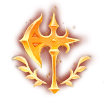
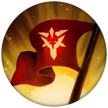
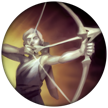
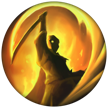

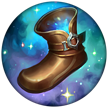


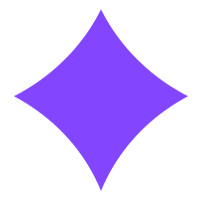









































 91,424
91,424
 8
8








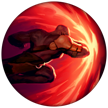
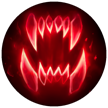
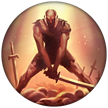

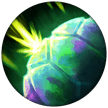
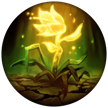














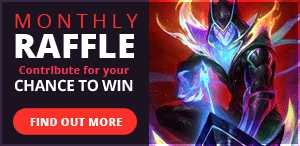
You must be logged in to comment. Please login or register.